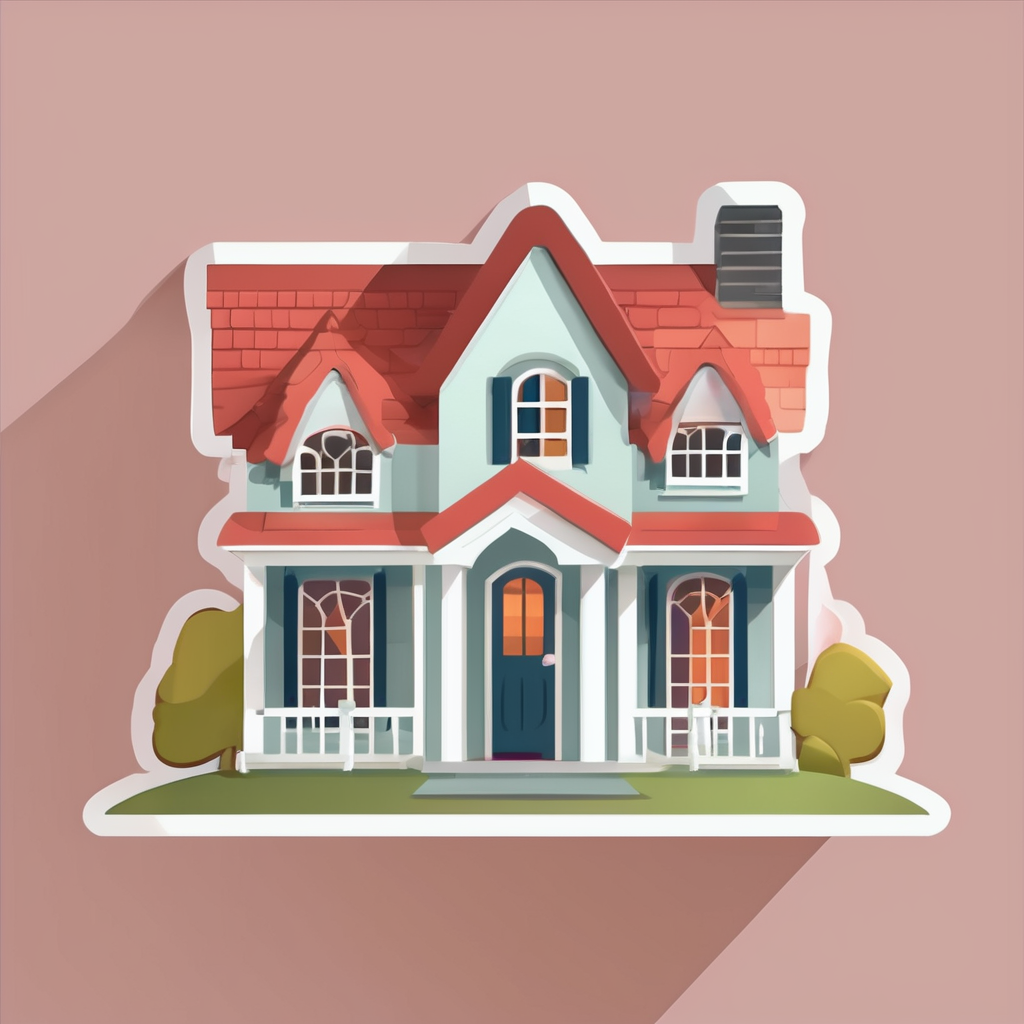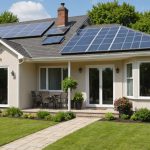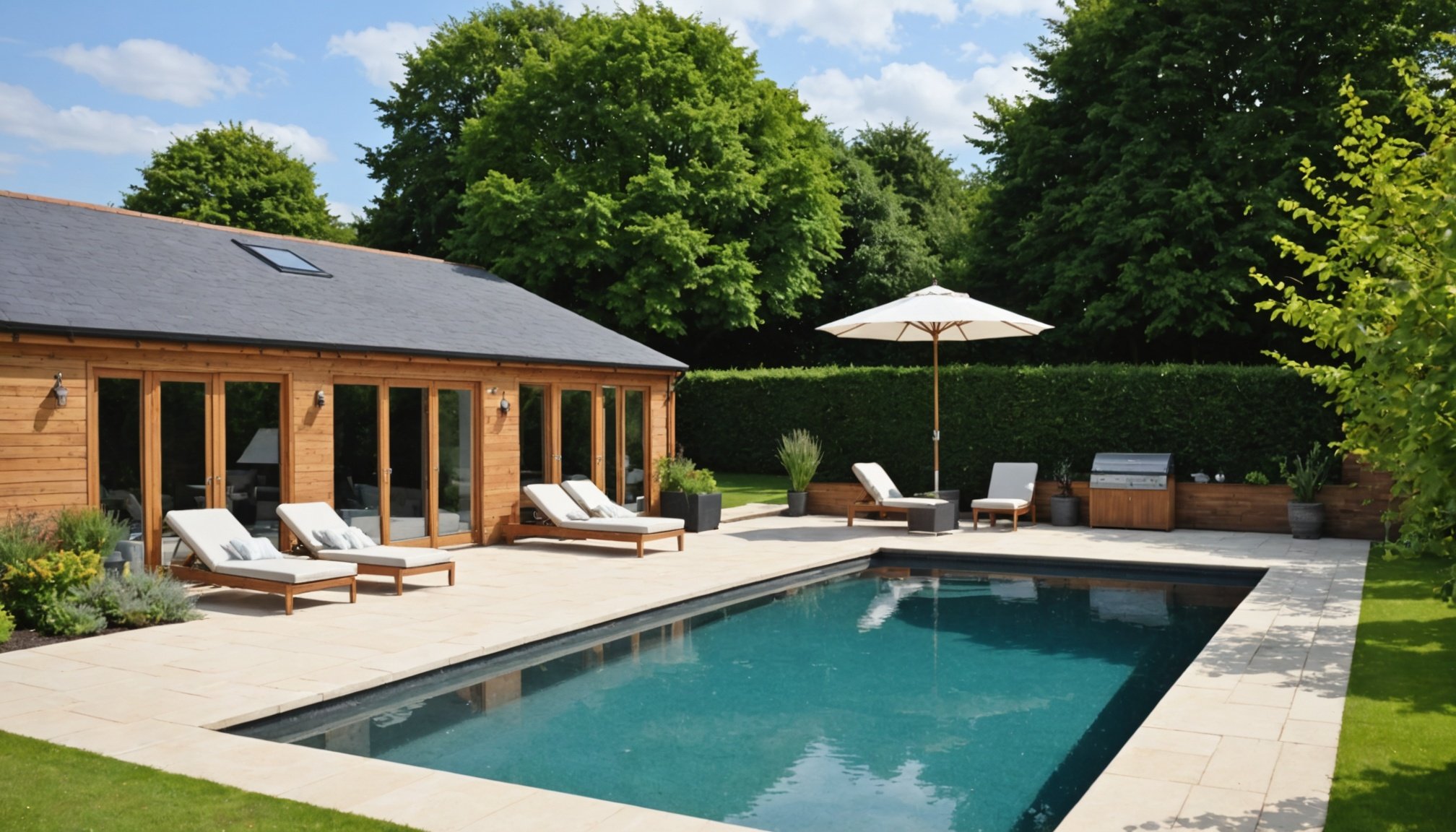Design Principles for Low-Maintenance Pools
Crafting a low-maintenance pool design involves balancing beauty with practicality. The right shape and layout simplify upkeep while enhancing aesthetic appeal. A key principle is choosing a layout that minimizes debris build-up, often achieved with curvy edges rather than sharp corners.
Aesthetic considerations are crucial. Aim to harmonize the pool’s form with its surrounding landscape. For example, a pool nestled naturally into a sloping garden can look organic while remaining functional. It’s advisable to blend the pool with the garden by using neutral tones and natural materials, thus creating a seamless transition between the pool and its environment.
Also to discover : Transforming Your UK Garden: Creative Ideas for Seamless Pool Cover Designs That Harmonize with Nature
When planning UK pool design, consider the climate. Ensure the pool design includes features that can handle frequent rain, like efficient drainage systems. Additionally, incorporating local plants in the landscaping reduces maintenance and supports biodiversity.
To sum up, effective low-maintenance pool design merges convenience and charm, offering a leisure facility that demands minimal upkeep without sacrificing style. Prioritizing harmonious layouts, climate-appropriate designs, and thoughtful material choices can transform your pool area into an elegant, serene haven.
This might interest you : Creating the Ultimate Dual-Purpose Pool for Relaxation and Fitness in Your UK Home
Materials for Low-Maintenance Pools
When selecting pool construction materials for a low-maintenance design, prioritise durability and ease of upkeep. Several upkeep-reducing materials enhance longevity while maintaining appearance and functionality.
Recommended Pool Materials
One popular choice for long-lasting construction is fibreglass, known for its smooth surface that resists algae growth. Unlike tiles, fibreglass requires less frequent cleaning and fewer chemical treatments, making it a practical choice for those aiming to reduce maintenance tasks. On the other hand, traditional tiles offer a luxurious aesthetic but may require more intensive grout cleaning.
Pros and cons of various finishes should be carefully considered. While tiles provide elegant customisation options, fibreglass offers efficiency in upkeep. Concrete, though robust, may demand regular resurfacing to prevent cracking. Therefore, it’s crucial to assess each material’s lifespan and maintenance needs.
Landscaping Materials
Incorporating hardscaping options like sleek stone or composite decking minimises time spent on lawn care. Decking materials, especially composites resistant to weather, are ideal for the UK’s varied climate.
Use of suitable plants can also complement low-maintenance designs. Native species that naturally withstand local weather conditions need minimal watering and upkeep. By carefully selecting these landscaping materials, pool areas can achieve seamless integration with their surroundings while ensuring practicality in everyday maintenance.
Landscaping Ideas Around Pools
Creating a harmonious pool landscaping involves selecting plants that thrive effortlessly, enhancing both aesthetics and functionality. Opt for UK climate-friendly plants like lavender or ornamental grasses that require minimal care, offering beauty with reduced upkeep. Integrating these resilient species can ensure the garden maintains its appeal throughout the year.
A well-planned garden design plays a critical role in integrating the pool area with its surroundings. Effortless garden designs focus on symmetry and balance, promoting a natural flow between the pool and the landscape. Use textures and colors from the chosen plants to create a cohesive appearance that feels unified.
Incorporating decorative elements such as stones and gravel offers an attractive solution for easy maintenance. They not only add visual interest but also reduce the need for constant weeding or mowing. Gravel paths or stone borders can define areas within the poolscape, lending a sense of order and elegance.
Ultimately, these landscaping strategies create a serene and visually stunning pool area that’s easy to maintain. By choosing climate-appropriate plants and low-maintenance materials, you can enjoy a picturesque environment tailored to your lifestyle without extensive gardening efforts.
Maintenance Strategies for Low-Maintenance Pools
Maintaining a low-maintenance pool involves strategic planning and use of efficient cleaning solutions. Understanding and implementing effective pool maintenance tips ensure your pool remains pristine with minimal effort.
Regular Maintenance Practices
Creating a hassle-free pool experience starts with a consistent maintenance schedule. This includes weekly checks of water levels, pH balance, and skimming debris. A balanced routine prevents minor issues from becoming costly problems.
Automated Cleaning Systems
Technology simplifies maintenance through robotic and automatic cleaning systems. These systems efficiently vacuum, scrub surfaces, and filter water without constant human oversight. Investing in a reliable robot can save significant time and energy, allowing owners to enjoy their pool worry-free.
Eco-Friendly Cleaning Solutions
Consider using eco-friendly cleaning solutions to keep the pool safe and environmentally conscious. Non-toxic alternatives like enzyme-based cleaners maintain water clarity without harming aquatic plants or local wildlife. Choosing sustainable products supports a healthy pool ecosystem.
By integrating these strategies, maintaining a pool becomes less labor-intensive and more enjoyable. Each practice contributes to extending the pool’s lifespan and enhances the overall user experience. Prioritising cleaning solutions and smart technologies ultimately reduces maintenance demands while promoting a neat and inviting pool environment.
Cost Estimates for Designing Low-Maintenance Pools
When considering pool design costs, balancing initial investment with long-term savings is crucial. By prioritising low-maintenance pool designs, homeowners can significantly reduce ongoing expenses, such as cleaning and repair costs.
Initial Costs vs. Long-Term Savings
Upfront costs often include pool construction, landscaping, and essential installations. While choosing durable, upkeep-reducing materials may increase the initial expense, they guarantee lower future maintenance costs. For instance, investing in fibreglass or composite decking is typically more cost-efficient in the long run due to its longevity and reduced need for repairs.
Budgeting for Cost-Effective Solutions
Effective budgeting focuses on cost-effective solutions both in pool design and materials. These include energy-efficient pumps and heating systems that lower utility bills, as well as selecting native plants that require minimal watering. Using hardscaping with durable materials ensures the pool area remains attractive and practical without constant upkeep.
Importance of Budgeting for Upkeep
Including upkeep in the overall budgeting process prevents unexpected financial strain. Allocating funds for maintenance schedules and potential upgrades ensures the pool retains its aesthetic appeal while remaining functional over time. This approach makes the investment in a low-maintenance pool sustainable and worthwhile, offering both immediate enjoyment and financial peace of mind.
Visual Inspiration for Pool Designs
Exploring aesthetic pool designs offers a wealth of inspiration for those envisioning their own serene oasis. By examining visual examples, prospective pool owners can glean ideas that artfully blend style and functionality, tailoring designs to their unique tastes.
Many inspirational pool galleries feature examples where elegance meets ease of maintenance. Pools set amidst naturally inspired landscapes, such as lush greenery or minimalist rock gardens, provide both beauty and practicality. Visuals showcasing how such harmonised environments can reduce upkeep meet a growing demand for seamless integration with nature.
When sifting through illustrative examples, pay close attention to projects that strategically use shape and material to enhance the visual appeal while prioritising low upkeep. For instance, pools with curved forms naturally enhance water circulation, reducing debris accumulation. Coupling this with carefully chosen materials like durable fibreglass can further minimise maintenance concerns.
Compile a collection of styles and elements that resonate personally to construct a truly customised design portfolio. This approach ensures that while the pool satisfies practical needs, it also reflects individual aesthetic preferences. Tailoring the design process to incorporate personal inspirations paves the way for a truly unique and delightful pool setting.











